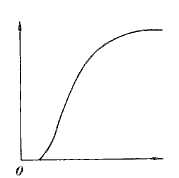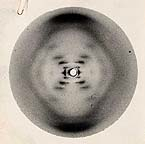Long before there were chain link barriers at the airports and long before there were restricted Airspaces popping up at will, there was a moment in time when all was well in the world of flight. You poured in the valuable fluid from the hose and it did not break the bank. You climbed into your personal airliner and more then one person winked at you expressing pleasure for your achievement. That was a heady time crafted within limits of sanity and unabashed in its desire to please any adventurer in his or her adventure. You wanted to fly and you did.
It was on one such day with an overhead cast of light and dark grey clouds that I set out for a flight of 60 nautical miles to take a trip on a multi-axis simulator.
I know you are probably anxious for me to describe what happened during that flight. Happily nothing at all. What did happen was when I walked in, head bowed into the confined space, buzzing with electronic equipment. The simulator was designed for a heavy jet, a Falcon 2000 replete with all the bells and whistles.
Falcon 2000
I sat down in the left seat as is the purview of the trainee in a disaster-free, non-scary, totally controlled situation of a simulator. Here is where you feel the Whoaas and the Ooohs, the whumps and bumps, the whoosh and thuds without the risk. Yup there is no risk of breaking a thing on this gigantically spacious (from a cockpit point of view) confine called a simulator. There is however the very real risk of pouring gallons of sweat, racing your heartbeat to the limits of the internal natural pacemaker and pulling off a neck-strain that one would, lifting the Empire State Building. Okay that was a minor exaggeration, but you get the point, don’t you? All because once you are in it, you are in it! It feels very, very real!
Falcon 2000 Cockpit
So I sat there all comfortable and tingling with excitement as the computer screens came online. Within minutes if not seconds, I was transported into that world of artificially real flying. Jazzing the juice of the make-believe kerosene into the engines that existed and were revving only in my mind, I took my feet of the brakes and with the gentlest of lurches I felt the forward motion. My back against the seat and I was leaving terra firma at a 15 degree pitch angle. The feeling was ecstatic. It was like flying my Mooney that I had flown in, only a thousand times more exhilarating. The smooth climb out as the altimeter tacked away the feet of altitude beneath me. I passed through some white puffs of happy and sincere clouds that made the drama of motion complete. “Wow!” is all I could say. My vocabulary was stunted to a three-letter word of exclamation.
After reaching the desired altitude of FL 350, I leveled off and happily made some gentle turns left and right. I caught my instructor smiling, I couldn’t smile anymore since my cheeks were pegged in maximally deflected grin mode, any more would strain the tissues at the corners of my mouth.
He (my instructor) said, “Take your hands off the yoke and see what she does”. I looked at him in disbelief. I wanted to fly it for the entire one-hour -every ticking second. But given his superior CFI over my then puny Instrument certificate, I yielded. What happened next (I know you were waiting for this) is a debacle of unprecedented proportions. You know when you have come to think like in those short few minutes, I had come to, of how wonderful things are and how terrific this ability to control this huge dynamo of aluminum from this cockpit and that I really should consider flying for an airline in my spare time and they, the airlines wouldn’t have to spend a nickel to train me and how I would wow them with my superior techniques, Well! The cockpit took a nosedive. The altimeter that had leveled at FL350 give or take a few hundred feet of vacillations that I believed were due to the kinks in the software, started to unwind at 3000feet per minute and that accelerated to 6000 feet per minute, until I whooaah-ed it and pulled on the yoke to bring it back into a positive climb.
So what happened? I looked at my instructor and he must have seen the big orbs of fright reflecting back his own image. While my grin had changed into some monstrous look of fear, disbelief and frustration all admixed with frown lines and dry open mouth ugliness, for his face seemed to have grown brighter and his smile now mimicked some diabolical grin.
Elevator and Rudder placement and motion
“You see what happens when you don’t trim the aircraft?”
“Ah Huh?” I said.
“Well, in a rarified atmosphere or even at low altitudes the most efficient way to fly an airplane whether it is 3000 pounds or a 100,000 tons is to have it fully trimmed. That is why all airlines fly autopilot except for take-off and landing. The autopilot continuously monitors the external pressures, the winds and matches them move-for-move in keeping the aircraft trimmed. If they flew manually imagine the plight of the passengers.” He paused a minute for that to sink into my clouded brain. “And,” continuing on his monologue, “if you were to carefully trim the aircraft in non-turbulent conditions at any altitude the results would be efficiency and comfort.” There was a deafening silence except for the whirring and whizzing of the electronic equipment that now seemed commonplace. After an interminable silence, I was finally able to put one word in front of another and speak, “comfort, I can understand very well. What about efficiency?”
“An aircraft out of trim will constantly require the elevator and ailerons to adjust its flight path, right?”
Air separation from sudden motion due to changes in (AOA)
Angle of Attack
I nodded in agreement. Simple concepts are quite simple when spoken with simple eloquence aren’t they?
“Right!” I said.
“Well, every time you adjust the elevator up or down you create a momentary drag which robs efficiency. The drag slows you down and that increases your time in the air which robs you of the extra gas that is required.” His frugal conscience was ahead of its time by a few years. “Same thing happens when you constantly perform uncoordinated banks in the aircraft or yaw the rudder out of the desired slipstream.” He touched his cheek in repose and then continued, “Air is a fluid and the rigid body of an aircraft, though it may appear rigid deforms to the pressures exerted upon it. This boundary between the air and the aircraft is the aero-elastic boundary. This zone is constantly under attack by the aerodynamic forces in an attempt to maintain perfect flow and efficient symmetry. A poorly trimmed aircraft induces a greater degree of drag, which consequently slows it down. So imagine a fish as it glides through the water with a damaged fin? Not only can it not glide properly it becomes lunch or dinner for a predator.
The Fish as an Airfoil with (CM) as Center of Mass and (CB) as Center of Body
“Fish,” he goes on to say, “have the innate ability to utilize turbulence and vortices in the water to their advantage by maneuvering with their body, tail and dorsal fins. Fish are inherently unstable in the water and need constant state of propulsion to maintain the glide or the hover.
Pectoral Fin of a Fish
Any damage or misalignment to the dorsal fins will prevent hovering and maneuvering, creating a more chaotic struggling motion that brings in the predators.” He looked over and said, “I was in the Fishery Dynamics business before I considered flying.” Oh that explained a lot. I know how to swim a little but it was flying I was mostly concerned with. Yet with that metaphor he had made a point. I did not want to be a fodder for nature’s wrath in robbing me of my fuel in getting to my destination! Smarty pants got his message across! (Notice, I use the word glide. It is very apropos to the function of drag created by an aircraft in air and a fish in sea). "To maneuver through any medium," he went on to say, "you have to glide as effortlessly as possible with the least "foot-print" (aeroelastic boundary) exposed and like airplanes, fish create similar vortices in their wake. So why not use them metaphorically to understand." This was an educated instructor!
Vortices behind a Fish
Plankton's vortices
The “Ah!” escaped out of my mouth without the “huh.”
I went about quickly trimming the aircraft into a stable flight. I had learned a valuable lesson. And then all of a sudden, hell broke loose! His hands were hovering around the circuit breakers! But that is for another day.
Flying back home that day with my blue colored shirt rigid in places with streaks of white salt, I hand-flew my trimmed Mooney as it slipped under the belly of the thick overcast at 10,000 feet. It was a new beginning! Ecstasy!
The lessons learnt were far more intense and etched some where deep in my brain. All I had to do was establish the “rut” in my memory banks to prevent it from fading.
Ruts
And that leads me to the very simplistic of all arguments; practicing procedures is how you develop the “rut” in the brain. It is quite similar to the ruts that develop in ski races. So, when ever, I fly, I look to make it the smoothest most efficient and comfortable flight.
I sit in the right seat some of the times as I gently probe the efficiency of the left-seat pilot trainee. Oh but for the pleasures of teaching a lesson learnt!
So next time you find an incarnation of me in the right seat show him or her the hands-off flying you can do. You will make him or her delight in your ability and maybe allow you to become a “teacher” of the teacher for that moment in time.
References:
George V. Lauder, Peter G. A. Madden Learning from Fish: Kinematics and Experimental Hydrodynamics for Roboticists International Journal of Automation and Computing 4 (2006) 325-335 Museum of Comparative Zoology, Harvard University, Cambridge, MA 02138, USA





































































